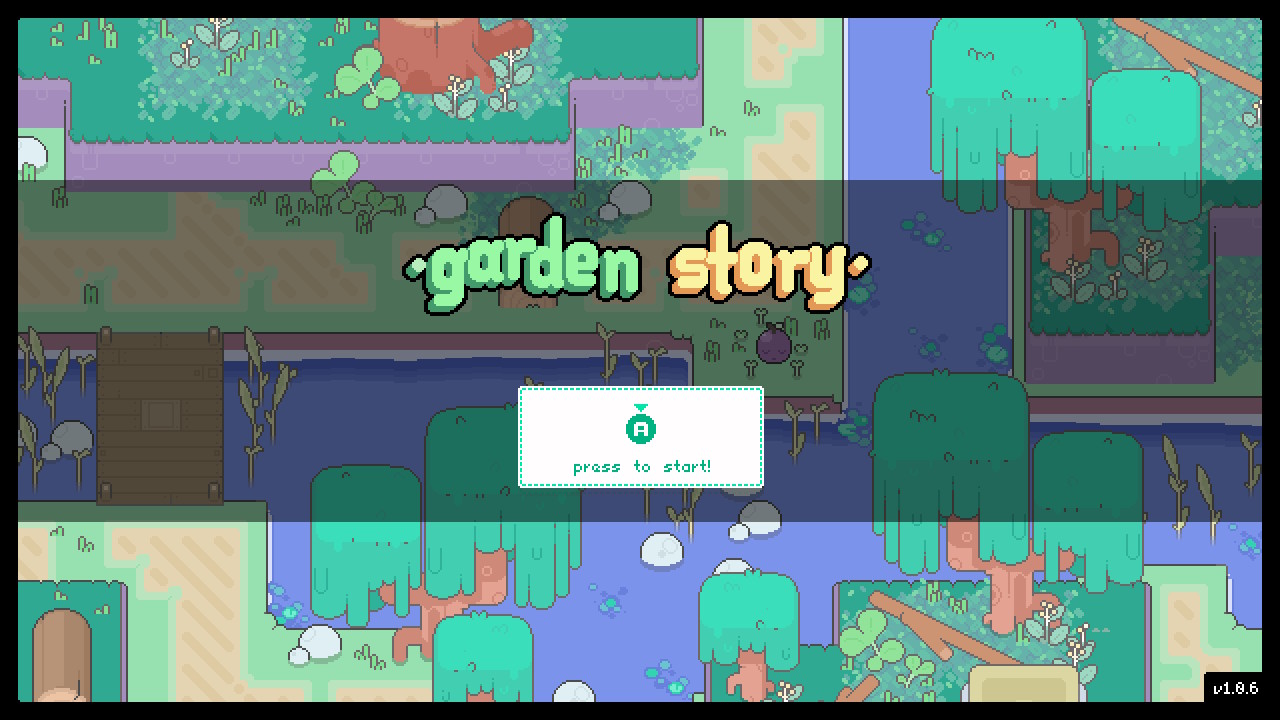[Review] Garden Story – Nintendo Switch
Garden Story
Nintendo Switch
Developed By: Picogram
Published By: Rose City Games
Category: Action, Adventure, Role-Playing, Simulation
Release Date: 8.11.21
Composer: Grahm Nesbitt
Is it possible for a game to be too adorable? I don’t know if this question is what inspired Portland-based developer Picogram to begin work on today’s game, the action-RPG Garden Story for the Nintendo Switch, but it certainly feels that way. Whatever their inspiration, Picogram and publishing partner Rose City Games have created a game whose setting, characters, and aesthetic would not be out of palace in a blockbuster Pixar release. More importantly, they layer those elements over a solid, accessible game design. Its only flaw, really, is that it might be a little bit too easy. But for those looking for a casual all-ages RPG experience with an awesome story and characters, Garden Story is the way to go.
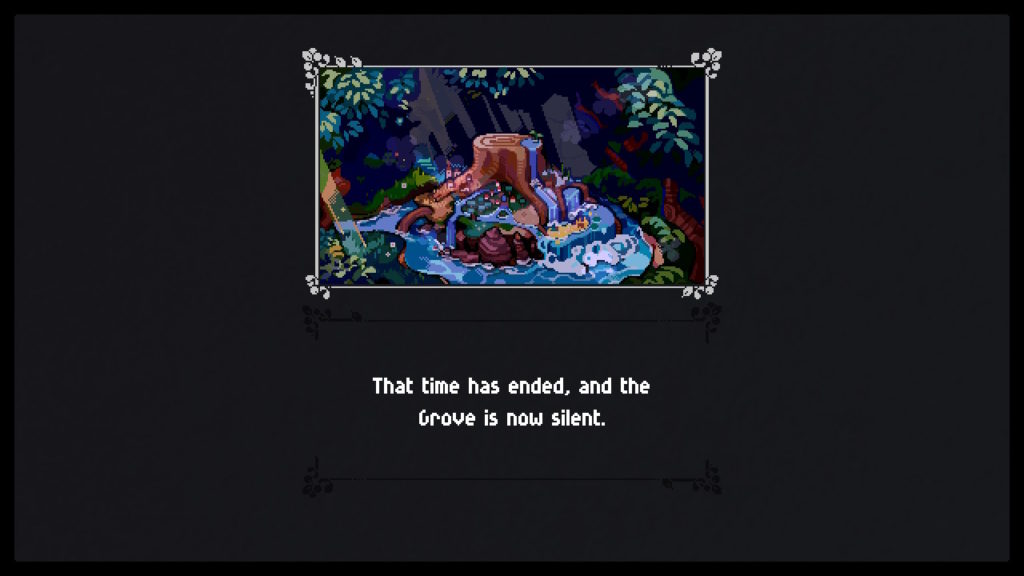
A Good Story in the Garden
In Garden Story, players take on the role of a young grape named Concord (get ready for a lot of food pun names). Concord leaves the Grove’s kindergarten to become a Guardian, the name given to the Grove’s protectors. Most Guardians had disappeared after going on a journey in search of an end to the Rot, a mysterious darkness threatening to overrun the Grove and its citizens. The four villages of the Grove have been disconnected, and it’s Concord’s job to re-establish contact between them and restore the population’s confidence in the Guardians, while also confronting the Rot every step of the way.
The story is fairly generic for an RPG; you’ve got a young hero, a mysterious evil, and an imperiled world. But that’s OK – Garden Story is more about excellent execution. The characters and game world are well-realized, and because of that the story is fully compelling all the way through. Moreover, while the story is fairly simple and accessible for younger gamers, it’s still well-constructed enough to remain perfectly compelling for older games as well.
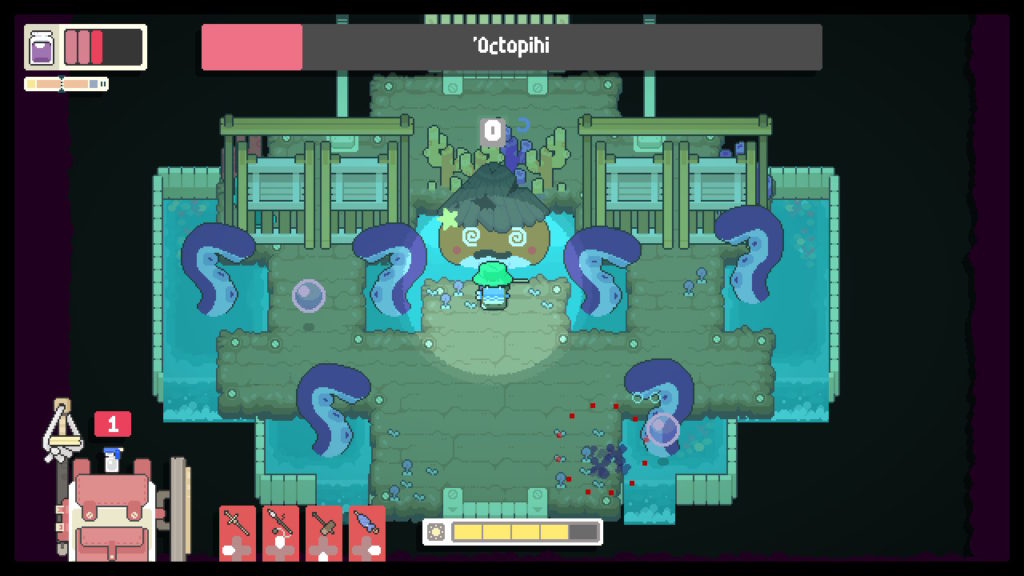
Fight of the Concord
The Combat in Garden Story is fairly simple action-RPG faire. There really aren’t a lot of bells and whistles here; you can attack, charge your attack, do a dodge roll, and block if you have a shield equipped. And that’s it. Concord can only attack if he has at least one full stamina bar, which severely limits the pace of combat early on, and even makes the combat seem a little boring in the early going. Once you gain a few extra bars on the stamina meter the game feels more fluid, however. Still, combat is far and away the weakest element of the game – and it’s not bad, really. It’s well-built and consistent, it just lacks enough depth to present much of a challenge.
The good news is that you don’t have to engage with combat very much unless you want to. Getting stronger is more Legend of Zelda style; you receive power-ups by defeating bosses or finding special items, not by grinding out levels via combat. The bosses are far and away the most interesting parts of the game’s combat. They’re still not exactly what I would call challenging, but at least they’re a good change of pace as they require a little more strategic thinking to defeat.
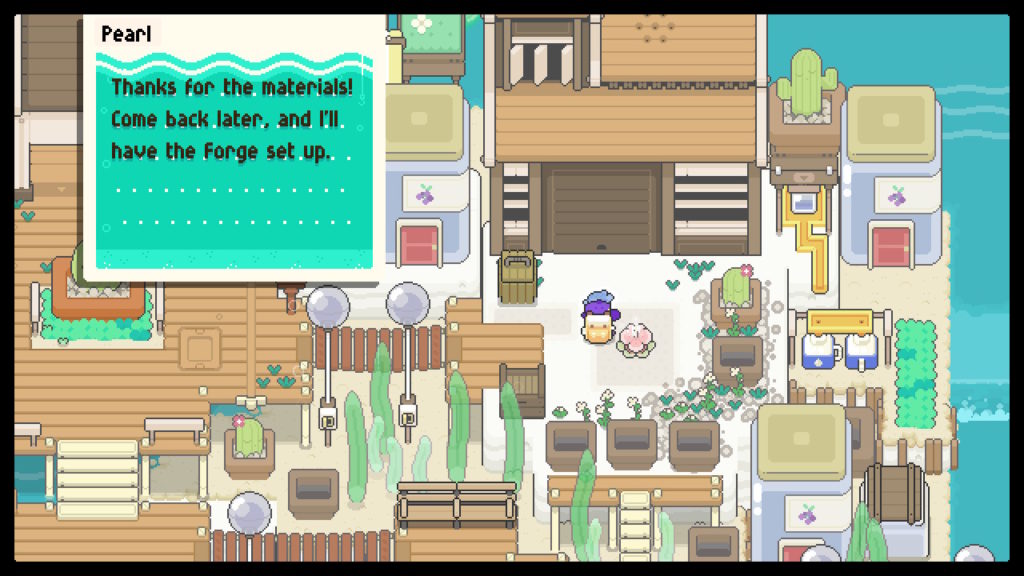
Building a Better Tomorrow
Concord has two main methods of rebuilding the Grove’s four villages. First, the game is based on a day and night cycle. Every day, when Concord wakes up, there are up to three requests posted on the bulletin board outside their house. Completing these requests – which are generally built around gathering materials or defeating enemies – before Concord goes to sleep for the day will increase the town’s experience level in one of three areas. Gaining levels will introduce new resource points, more inventory at shops, and new upgrades at the blacksmith.
Garden Story also features a crafting system that, like the combat, is fairly basic. Concord collects materials from defeating enemies and at special resource points scattered around the world. These resources can be used to upgrade weapons and accessories, as well as to build structures that can be placed around the towns at certain points. Some of these structures are cosmetic, like lamps and plants, while some are functional, like resource drop off points and storage chests. You can unlock new structures by filling up each village’s library with that region’s resources.
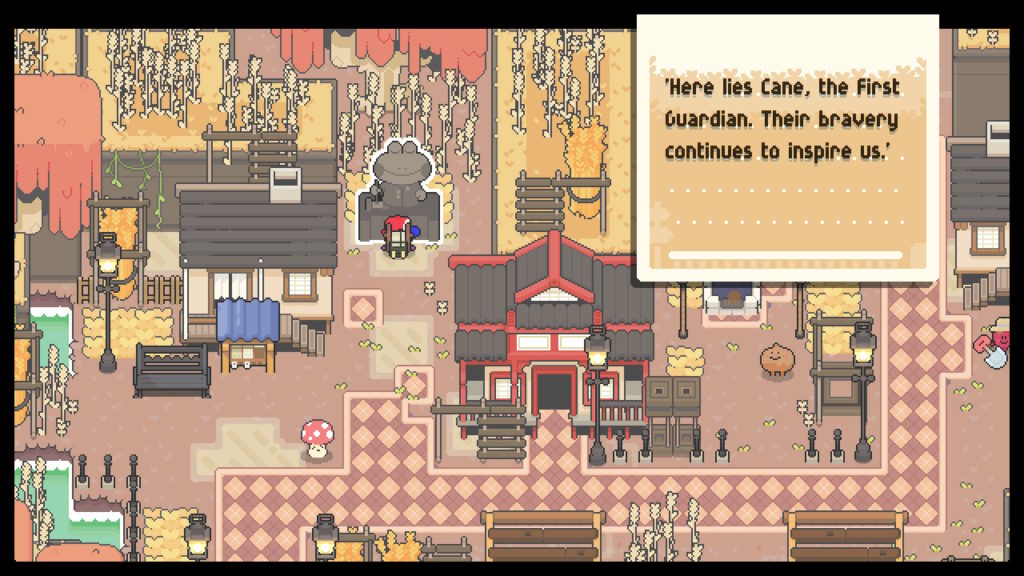
A Garden of Pixels
Garden Story doesn’t get many points for gameplay, but it gets a mountain of extra credit for its graphics. I’m the first to admit I’m a sucker for the retro pixel look, and Picogram takes full advantage of that. Character sprites are fluidly animated and adorably rendered in a perfect 16-bit throwback style. Backgrounds are lushly detailed and make the world feel fully inhabited. I just love how this game looks. Garden Story is no slouch in the music department, either. The soundtrack is smooth, energetic, and inviting all at the same time. I often found myself wandering around the map just to enjoy the game’s atmosphere.

You’ll Love This Garden’s Story
Garden Story takes the second half of its title very seriously. It uses a deceptively simple setup to build a fully realized world that is accessible to gamers of all ages. The game amplifies the power of its world-building with a wonderfully rendered game world, and the soundtrack completes an atmosphere that invites players to stick around for a while. Unfortunately, the gameplay is just a little too simple to pose much of a challenge for veteran gamers, but the story and world are so inviting that I didn’t really find myself caring about that too much. If you’re looking for a game that’s just a fun time, play Garden Story.





Garden Story
Digital – $19.99
Follow Picogram
Follow Rose City Games

The Switch Effect was graciously supplied a code for review purposes.

